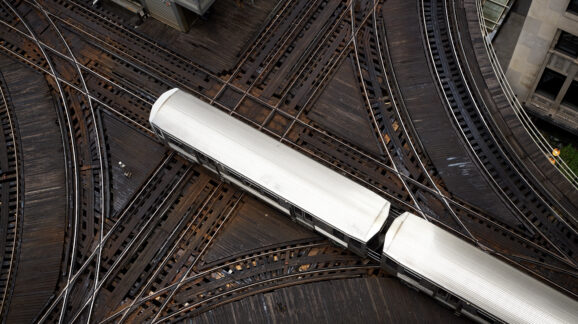J. D. Vance’s One-Track Mind for Railroad Regulation
A mandate backed by the VP hopeful wouldn’t make trains any safer, but it would damage the ability of the rail industry to pursue automation.
Ohio senator and GOP vice-presidential nominee J. D. Vance has something of a soft spot for unions, as evidenced by his co-sponsorship of the 2023 version of the Railway Safety Act. The legislation would mandate minimum two-member crews on freight trains, a requirement unions have long sought. Such a mandate wouldn’t make trains any safer but would damage the ability of the rail industry to pursue automation.
The rule would aid unions that represent railroad workers. Not coincidentally, the 202,000-member Sheet Metal, Air, Rail, and Transportation Workers (SMART) union has lost almost 5,000 members in the last five years.
The Federal Railroad Administration (FRA), under the Biden administration, published a rule in April mandating two-person crews, but the railway industry is challenging the rule in court. Even if the rule survives, it can potentially be reversed by a future White House. What SMART and its allies in Congress want is for the mandate to be written into law.
Among those allies is Vance, who views saving individual jobs as paramount and became an original co-sponsor of the current version of the legislation. He is still pushing for the legislation and has expressed frustration with Republicans who won’t get onboard.
“I did run into a problem of old-guard Republicans who really hate the unions and really think of themselves fundamentally as advocates of the business community and not advocates of the voters that we represent,” he told Politico recently.
There are practical reasons for his fellow Republicans — and Democrats, for that matter — to oppose the legislation. If there is any form of transportation that should be on the leading edge of automation, it is trains, which have an automatic safety edge because they don’t use public roads or the skies. Up until the 1990s, rail lines utilized three or more crew members. There were about 4.6 accidents per million miles of railways traveled in 1992, according to data from the FRA. In the decades since, the standard crew size has shrunk down to one engineer and one conductor. Some trains have used just one engineer. The rate of accidents had fallen in 2023 to 3.2 per million miles.
The two-person mandate prevents further attempts at streamlining and automation, and there’s little reason to think it would improve safety. The Obama administration pushed a two-person rule in 2016, but the U.S. Department of Transportation (DOT) found that the “FRA cannot provide reliable or conclusive statistical data to suggest whether one-person crew operations are generally safer or less safe than multiple-person crew operations.” DOT reaffirmed the finding three years later. The Biden administration nevertheless pushed the rule through.
The supply-chain crisis of 2021 proved how crucial railways were to the broader economy and how fragile that supply chain could be. Automation would help to modernize that system. Some railway jobs might be lost, but the growth of the entire rest of the economy depends on keeping the supply chain humming along.
Read more at National Review
